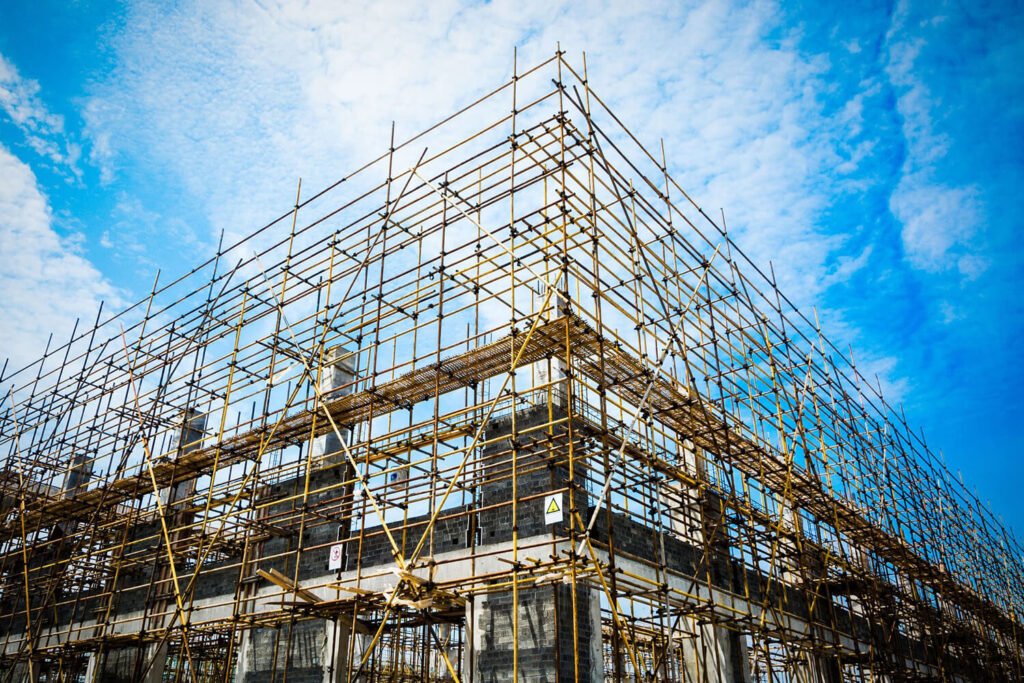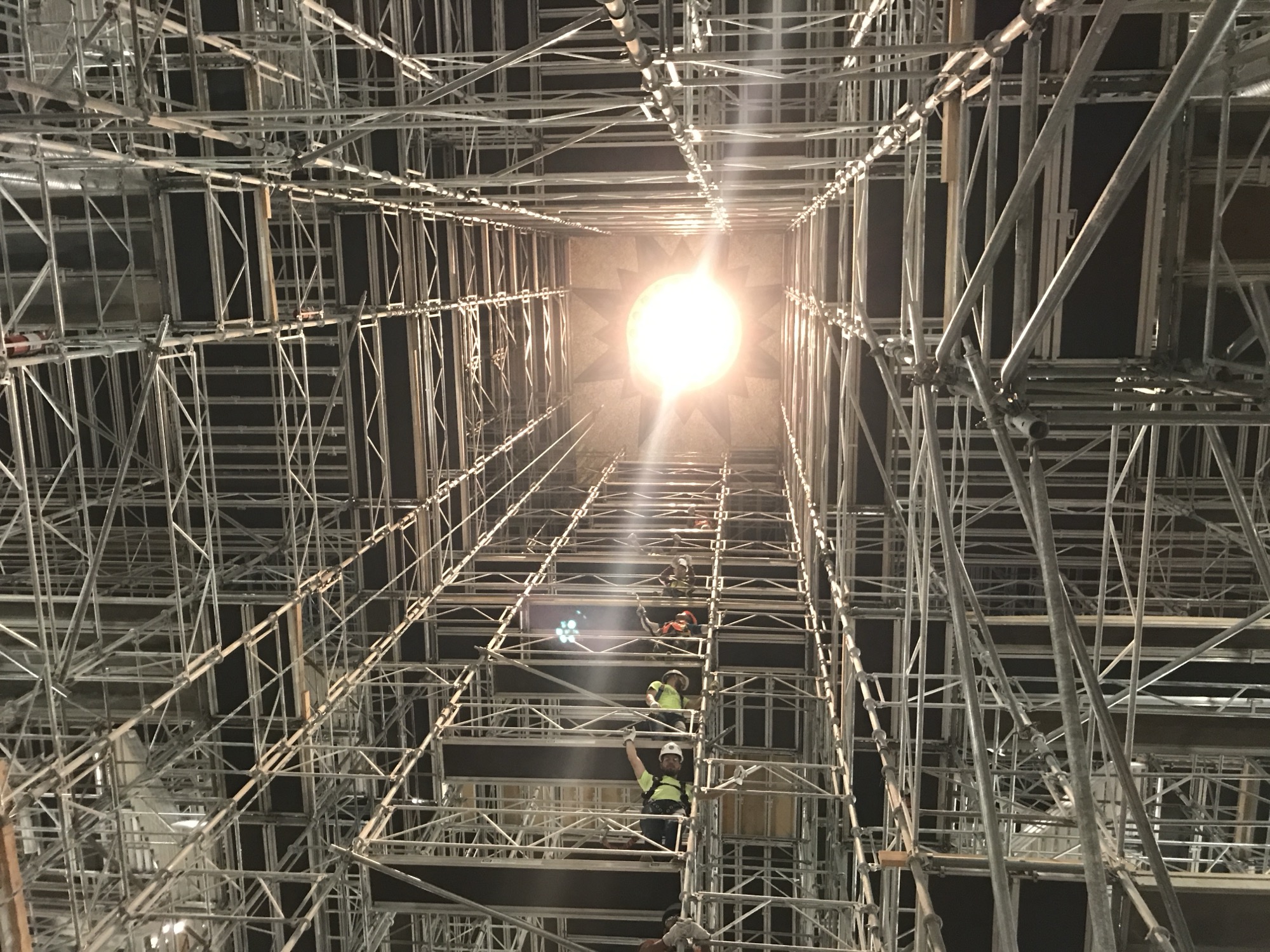Local Scaffolding Company Providing Reliable Services Throughout Surrey
Local Scaffolding Company Providing Reliable Services Throughout Surrey
Blog Article
Exploring the Various Sorts Of Scaffolding Made Use Of in Construction Projects
The building market depends heavily on different kinds of scaffolding to fulfill particular project requirements, each offering distinctive benefits and applications. Conventional structure scaffolding provides a tough foundation for basic tasks, while put on hold scaffolding is necessary for job on high-rise frameworks.

Conventional Frame Scaffolding
Traditional framework scaffolding is just one of the most widely utilized techniques in the construction market due to its effectiveness and flexibility. This system includes upright and horizontal frames that are assembled to develop a secure platform for materials and workers. The major elements consist of upright posts, horizontal ledgers, and diagonal braces, which together offer a solid structure that can support significant tons.
One of the vital advantages of typical structure scaffolding is its versatility to various construction tasks, varying from property buildings to big business frameworks. The modular design enables easy assembly and disassembly, making it effective for both temporary and lasting tasks. Furthermore, the system can be customized in height and width, accommodating different building styles and site problems.
Safety is paramount in scaffolding applications, and conventional structure systems are geared up with guardrails and toe boards to stop falls and make sure employee protection. Furthermore, routine assessments and adherence to safety guidelines are essential in keeping the stability of the scaffold. Generally, conventional frame scaffolding remains an essential selection in the building sector, supplying a dependable platform for labor and improving overall task performance

Suspended Scaffolding
Put on hold scaffolding offers an one-of-a-kind option for building jobs that need accessibility to raised surfaces, specifically in situations where standard frame scaffolding might be not practical. This sort of scaffolding is normally suspended from the roof or upper levels of a structure, utilizing a system of ropes, pulley-blocks, and platforms to create a functioning space that can be adapted to numerous heights.
Among the key benefits of put on hold scaffolding is its flexibility. It can be conveniently repositioned or decreased to accommodate changes in building and construction requirements, making it ideal for tasks such as window installation, façade job, and upkeep on skyscraper structures. Furthermore, the very little footprint of suspended scaffolding enables better use ground area in metropolitan atmospheres, where space is frequently limited.
Safety and security is an important factor to consider in the usage of suspended scaffolding. Overall, suspended scaffolding provides a efficient and reliable remedy for accessing hard-to-reach locations in various building situations, boosting both efficiency and security on site.
System Scaffolding
System scaffolding, usually considered as a contemporary service in the scaffolding sector, consists of pre-engineered parts that can be rapidly set up and adapted for numerous building and construction projects. Scaffolding. This kind scaffolding safety pdf of scaffolding is identified by its modular style, which permits versatility and effectiveness on task websites, accommodating different elevations and architectural requirements
Typically made from high-strength steel or aluminum, system scaffolding provides boosted toughness and stability. The components consist of vertical articles, horizontal journals, and angled braces, which interconnect securely, ensuring a durable framework. The style frequently incorporates standardized installations, streamlining assembly and disassembly processes, thereby minimizing labor time and costs.

Rolling Scaffolding
Rolling scaffolding is a functional option to standard fixed scaffolding, created for mobility and ease of use on building sites. This type of scaffolding includes a platform sustained by frames with wheels, permitting employees to quickly move it as needed. The movement attribute significantly boosts efficiency, as it lessens downtime connected with setting up and disassembling fixed scaffolding.
Commonly built from lightweight products such as aluminum or steel, rolling scaffolding offers a sturdy yet portable remedy for jobs needing constant repositioning - Scaffolding. It is specifically helpful in jobs such as painting, drywall installment, and electric job, where access to different heights and locations is necessary
Security is paramount in rolling scaffolding style, with functions such as securing wheels to avoid unexpected activity when in use, and guardrails to secure employees from falls. Furthermore, many versions are adjustable in useful reference height, fitting different project needs.
Cantilever Scaffolding

The style of cantilever scaffolding generally includes utilizing arms or braces anchored to a structure or framework, enabling the system to expand outward securely. Safety is extremely important; thus, these scaffolds need to be crafted to endure ecological conditions and numerous lots. Routine examination and upkeep are vital to make certain architectural integrity and employee safety and security.
Cantilever scaffolding is preferred for its adaptability and effective use room, making it a popular selection in urban environments where space constraints prevail. Additionally, it promotes simpler accessibility to high altitudes, inevitably adding to the overall effectiveness of building tasks. Just like all scaffolding types, appropriate training and adherence to safety requirements are critical for employees making use of cantilever scaffolding.
Final Thought
Finally, the diverse sorts of scaffolding made use of in building and construction projects each offer distinct objectives customized to scaffolding questioning particular website requirements. Typical frame scaffolding supplies stability, while put on hold scaffolding uses adaptability for elevated tasks. System scaffolding promotes quick setting up, and rolling scaffolding improves movement for varying workplace. Cantilever scaffolding properly attends to barriers in metropolitan settings. Comprehending these scaffolding types is essential for enhancing security and performance in construction, inevitably contributing to the successful completion of projects.
Standard structure scaffolding offers a strong foundation for general jobs, while suspended scaffolding is essential for job on skyscraper structures.Rolling scaffolding is a functional choice to typical fixed scaffolding, developed for wheelchair and convenience of use on building sites. As with all scaffolding kinds, proper training and adherence to security requirements are important for employees making use of cantilever scaffolding.
Traditional frame scaffolding offers stability, while put on hold scaffolding uses convenience for elevated tasks. System scaffolding facilitates fast setting up, and rolling scaffolding boosts wheelchair for varying job environments.
Report this page